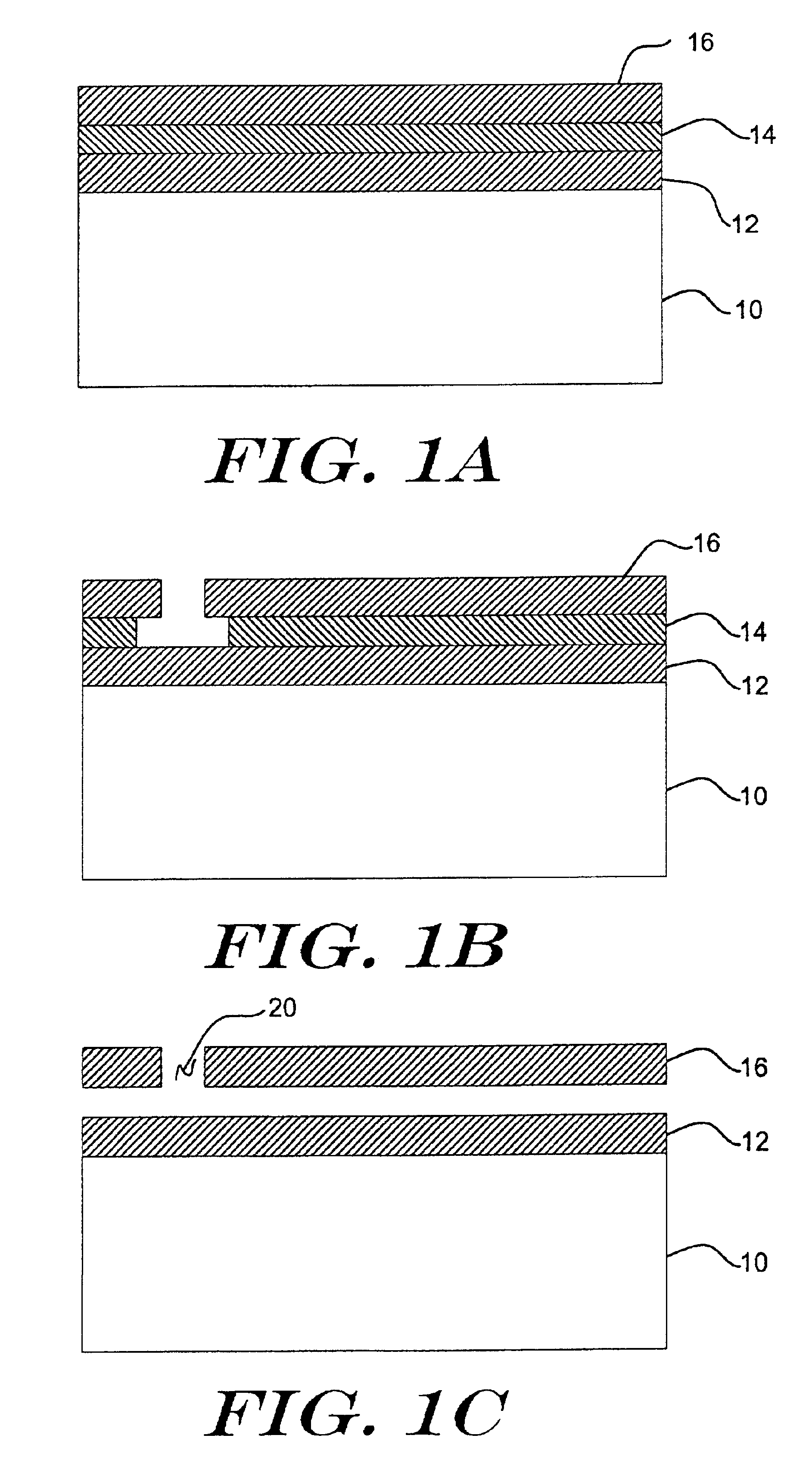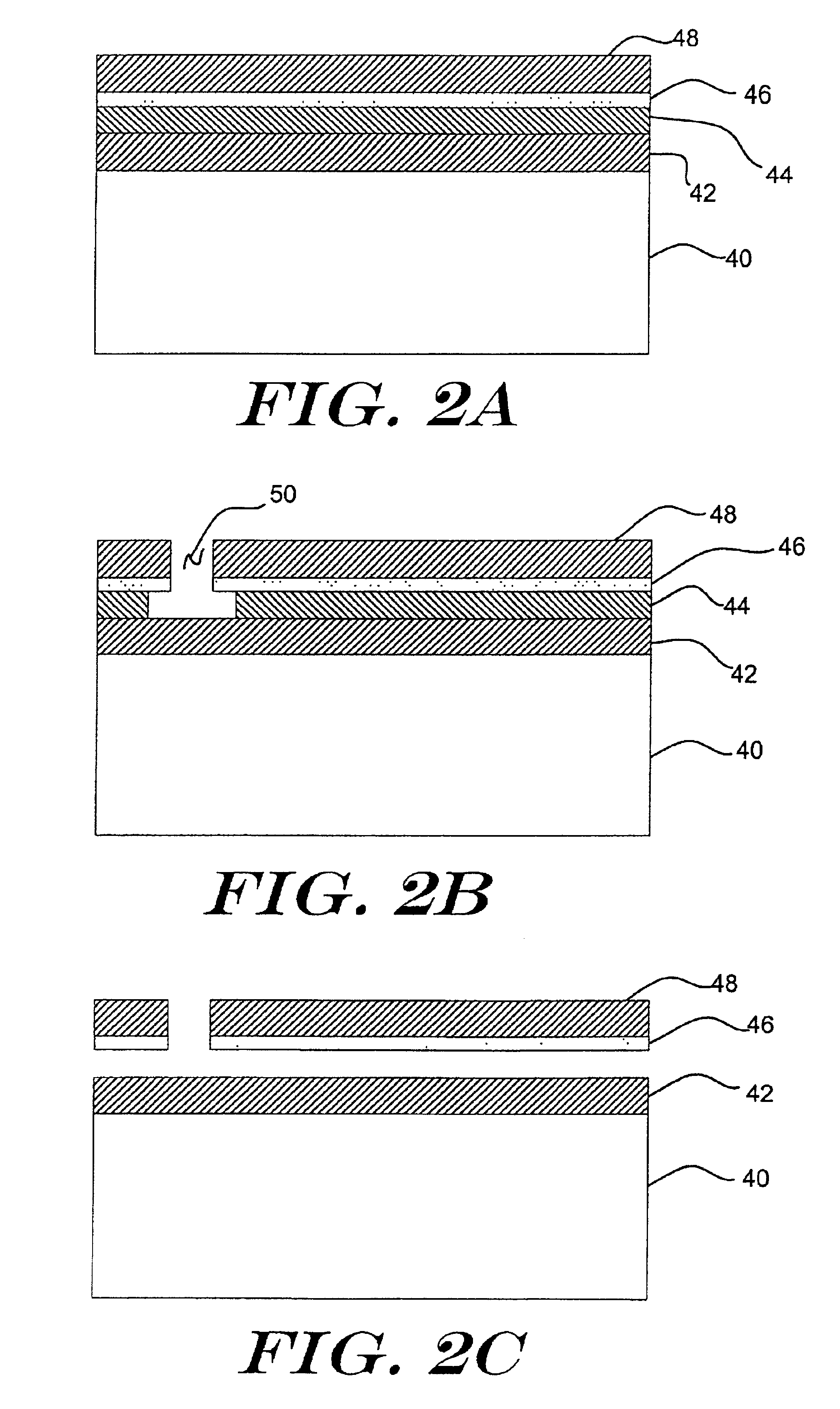Use of an organic dielectric as a sacrificial layer
a technology of organic dielectrics and dielectric layers, applied in the field of semiconductor fabrication techniques, can solve the problems of difficult and impractical manufacture of small lightweight mechanical or electromechanical parts, difficulty in achieving the miniaturization of mechanical and/or electromechanical systems, and difficulty in performing acidic etchants
- Summary
- Abstract
- Description
- Claims
- Application Information
AI Technical Summary
Benefits of technology
Problems solved by technology
Method used
Image
Examples
Embodiment Construction
[0022]FIGS. 1A-1C are cross-sectional side views showing an illustrative method for forming a suspended structure. The illustrative suspended structure may be part of, for example, a beam, a slab, a comb, a finger, etc. of a MEMS or other micromachined device, a low capacitance metal interconnect line, an on-chip inductor, or any other suspended structure. FIG. 1A shows a substrate 10 having a first layer 12, a sacrificial second layer 14 provided above the first layer 12, and a third layer 16 provided above the sacrificial second layer 14.
[0023]Although not shown in FIG. 1A, one or more intervening layers may be provided between the substrate 10 and the first layer 12, the first layer 12 and the sacrificial second layer 14, and / or the sacrificial second layer 14 and the third layer 16, as desired. The one or more intervening layers may include, for example, an inorganic dielectric, a metal layer, a polysilicon layer, an optical layer, an etch stop layer, or any other material or ma...
PUM
| Property | Measurement | Unit |
|---|---|---|
| temperature | aaaaa | aaaaa |
| glass transition temperature | aaaaa | aaaaa |
| glass transition temperature | aaaaa | aaaaa |
Abstract
Description
Claims
Application Information
 Login to View More
Login to View More - R&D
- Intellectual Property
- Life Sciences
- Materials
- Tech Scout
- Unparalleled Data Quality
- Higher Quality Content
- 60% Fewer Hallucinations
Browse by: Latest US Patents, China's latest patents, Technical Efficacy Thesaurus, Application Domain, Technology Topic, Popular Technical Reports.
© 2025 PatSnap. All rights reserved.Legal|Privacy policy|Modern Slavery Act Transparency Statement|Sitemap|About US| Contact US: help@patsnap.com



